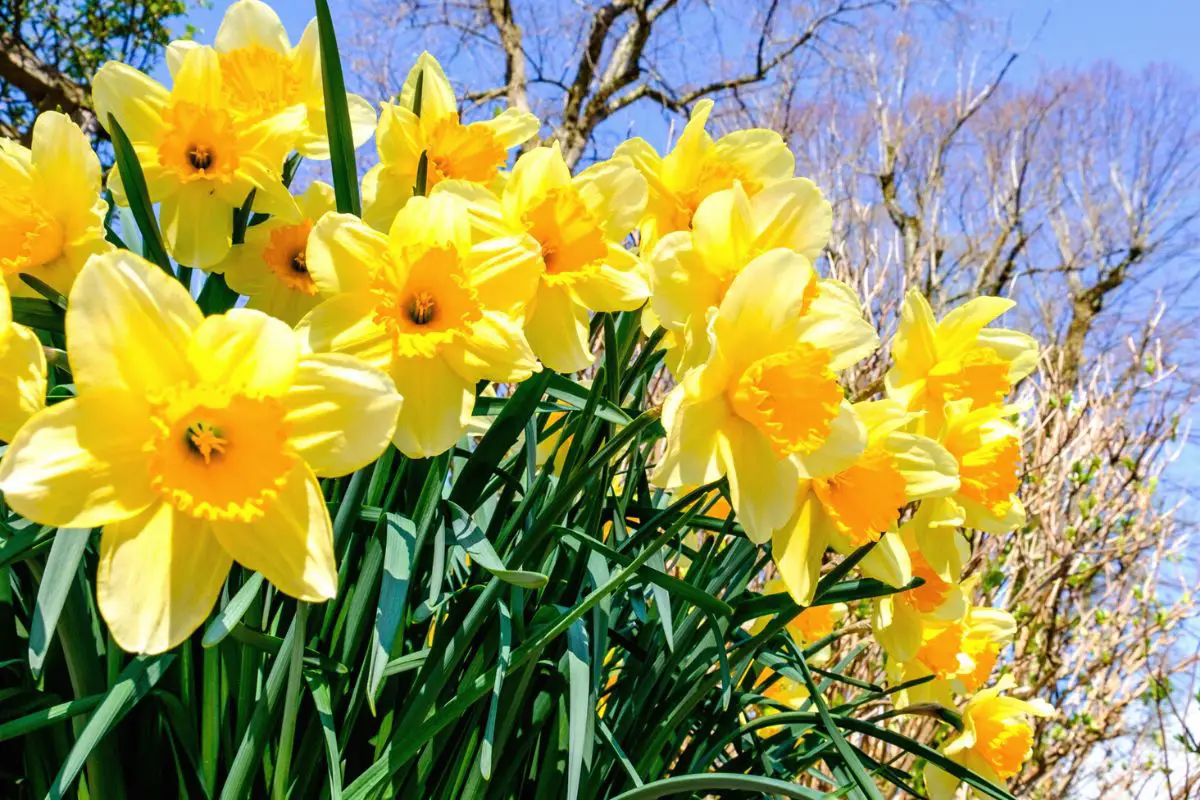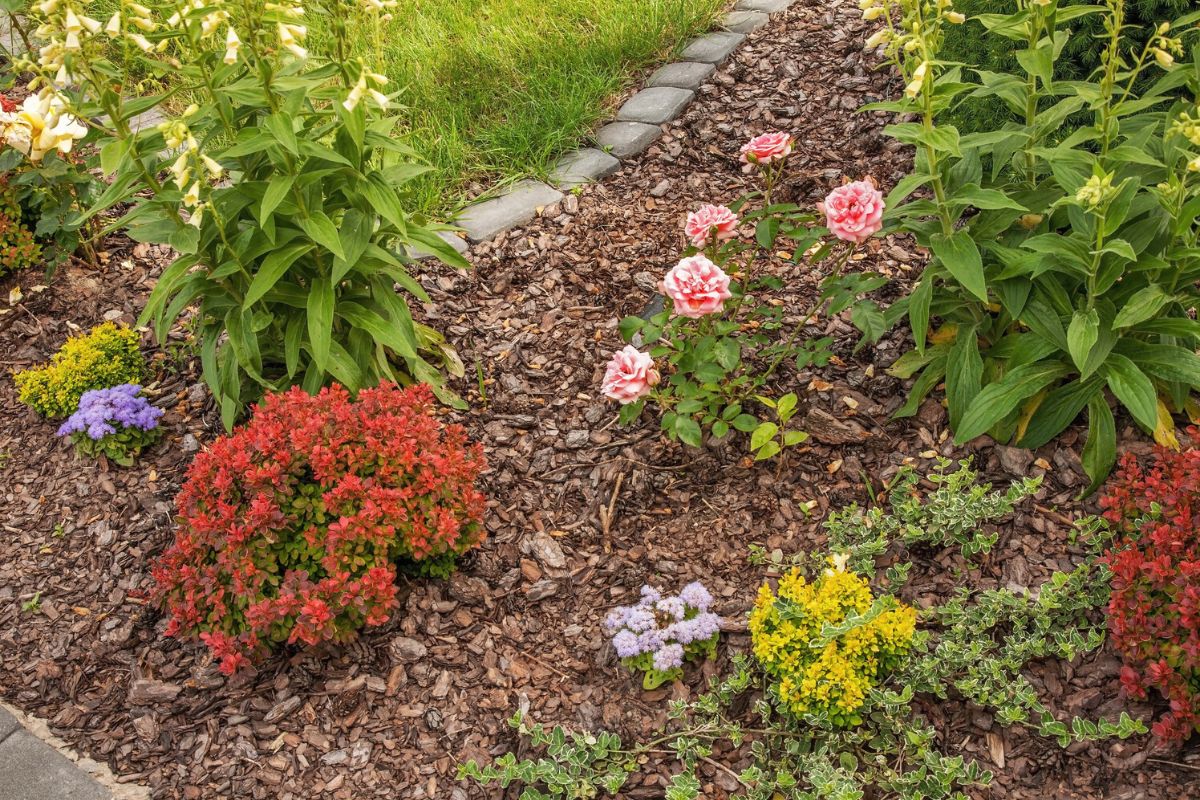A vibrant and colorful flower garden is a feast for the eyes. However, plenty of hard work and sufficient knowledge are necessary to grow and maintain a successful flower garden. One vital piece of information gardeners must know is how to care for flower bulbs after the blooming season.
Not all flower bulbs need to be dug up. Bulbs of winter-hardy plants are better left in the soil over winter to bloom in the following year. However, you can dig them up to divide them. Conversely, flowering plants that don’t need a cold period must be dug up to protect them from winter damage.
As we go along, we will discuss what flower bulbs need to be dug up and how to care for them. Also, I will share what flower bulbs should stay underground and how to protect them during winter.

Tender Bulbs That Need to Be Lifted
A good rule of thumb is that flowering plants that bloom in summer are not sturdy enough to survive the freezing temperatures in winter. You will have to dig up their bulbs and store them indoors, where they are safe from frost.
However, there are a few exceptions to this general rule, especially if you live in a warm area where winters do not go below 40 °F (4.4 °C).
Below is a list of plants whose flower bulbs you’ll need to dig up:
- Amaryllis
- Bearded Iris
- Begonia
- Calla lilies
- Dahlias
- Freesia
- Spider Lily
How to Care for Bulbs After Digging Them Up
Bulbs that are sensitive to the freezing winter are often called tender bulbs. You must dig them up after the first fall frost date when all the leaves have withered.
The bulbs need as much energy before they go dormant in the fall. They get this energy by draining it from the leaves, so it’s important to wait until the leaves have withered before taking out the bulbs.
Carefully dig out the bulbs to avoid injuring them. You must get rid of damaged bulbs as they might be infected and contaminate the other bulbs. They are also unlikely to recover from the injury during storage.
Also, remember to properly clean and dry before storage. This ensures that the flower bulbs remain viable for replanting in the following spring.
Storage conditions are species-specific since some plants may undergo premature germination when stored at optimal growing temperatures. Consequently, you should keep the bulbs at low enough temperatures to prohibit growth but not so low that it becomes dangerous for them.
Winter-Hardy Flower Bulbs
Many flower bulbs are hardy and can stay in the ground for several years and do not need to be dug up. These plants can come back and bloom year after year, even with little human intervention. Also, some plants need a cold period to stimulate blooming in spring.
Here are some flower bulbs that don’t need to be dug up:
- Allium
- Anemones
- Crocus
- Daffodils
- Hyacinth
- Iris
- Ranunculus
- Tulips

Winter Protection for Underground Bulbs
Flower bulbs that stay in the ground after the blooming season are strong enough to survive winter. However, they will still need special care to avoid winter injury. Of course, you must understand your plant’s basic needs and care requirements in the fall.
Below are some essential things to remember to protect the flower bulbs in the ground over winter:
Hydrate Sparingly
Ideally, you should continue watering the flower bulbs in the fall until the soil temperatures drop below 40 °F (4.4 °C). As the ground freezes, the bulbs will become dormant and will not need as much moisture. Watering them well shortly before winter will help them store enough energy.
Avoid overwatering the flower bulbs. After the blooming period, the bulbs will need less water. The lower temperatures will also keep the moisture in the soil longer, so you should water your plants sparingly.
It’s also important to ensure that the soil still has excellent drainage. Amend the soil with organic compost when necessary.
Apply Mulch for Frost Protection
Mulching is crucial to ensure the bulbs’ survival over winter, especially during harsh ones. You can also apply mulch in the summer to keep the bulbs cool. Essentially, the mulch functions as a temperature regulator that keeps the soil warm in winter and cool in the summer.
You can use tree bark, compost, or straw as mulch, but you must ensure that the sources are void of diseases. Otherwise, you risk exposing the flower bulbs to infections. Bark and sawdust have the best resistance to diseases.
Most bulbs benefit from shallow planting; burying them too deep into the soil can be counterproductive.
Adding a thick layer of mulch can also be bad for flower bulbs. It is best to place only 2-4 inches (5-10 cm) of mulch on the ground to keep the bulbs and the soil at an ideal temperature.

Why Flower Bulbs Need to Be Dug Up
Many flowering plants with bulbs can live several years undisturbed and often prefer to stay that way. However, some bulbs can benefit greatly from being dug up annually to ensure healthy growth the following year.
In general, you can dig up all flower bulbs. However, not all of them need to be dug up every year. So it is essential to know why, when, and how to dig up the flower bulbs in your garden.
You need to dig up flower bulbs for the following reasons:
- The flower bulbs are tender and cannot withstand freezing temperatures.
- You need to divide overgrown bulbs to avoid overcrowding.
- To protect the bulbs from underground pests and rodents.
Let’s discuss them in more detail below:
Timing, Digging, and Storing
The best time to dig up flower bulbs for storage is after the blooming season. It is typically at least six weeks after the blooming season. That’s about enough time for the bulbs to store sufficient food and energy before entering dormancy.
When digging up the flower bulbs, avoid cutting through them with a spade. Dig a few inches (5+ cm) away from the crown of the plant to prevent unnecessary injuries to the bulbs.
Specific plants may need special storage conditions. Check the care guide of your plants to confirm their temperature, light, and moisture requirements during storage.
Periodic Division (Every 3-5 Years)
Bulbs of perennial flowers prefer to stay underground for several years. Some can even thrive for a decade undisturbed. However, they will do best when dug up and divided every 3 to 5 years, especially if you have limited space in your garden.
If you wait 10 years to dig up and divide the flower bulbs, chances are, they would already be so big and leggy that you will need to dig a large trench just to pull them out.
Remember that you need to transplant the flower bulbs right away after division. Prolonged exposure outside the soil can make the bulbs susceptible to stress, dehydration, or infections. Dig up the new planting location before digging out the flower bulbs.
Pest Protection
Some pests and rodents attack flower bulbs after the blooming season. Squirrels, for example, are known to eat tulips.
So, if you’re worried about pests in your area feasting on your precious flower bulbs, you may want to lay out some traps to catch them.
Alternatively, you can dig up your flower bulbs and store them safely. You can then replant them later during the growing season.
Final Thoughts
Many flower bulbs can benefit from being dug up after the blooming period, but others are better left in the soil for several years. It’s best to understand your plant’s growth requirements to determine if it’s necessary to dig them up yearly.
Remember that you need to dig up the flower bulbs only if:
- They are the tender variety
- There are risks of damage from pests
- You need to divide overgrown bulbs
Moreover, you must avoid injuring the bulbs while digging them out because the cuts and wounds will make them susceptible to infections and less viable for replanting.







